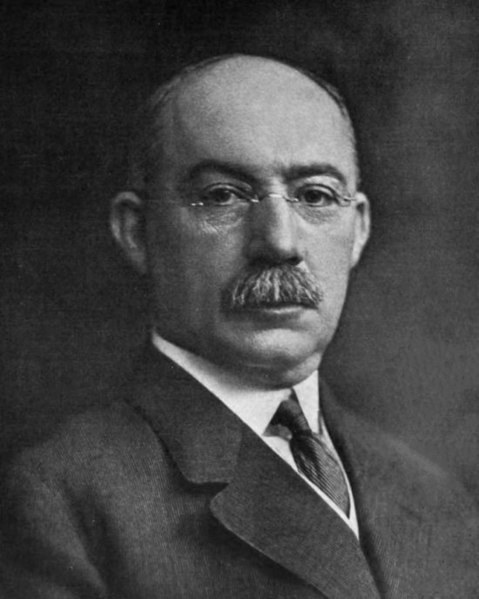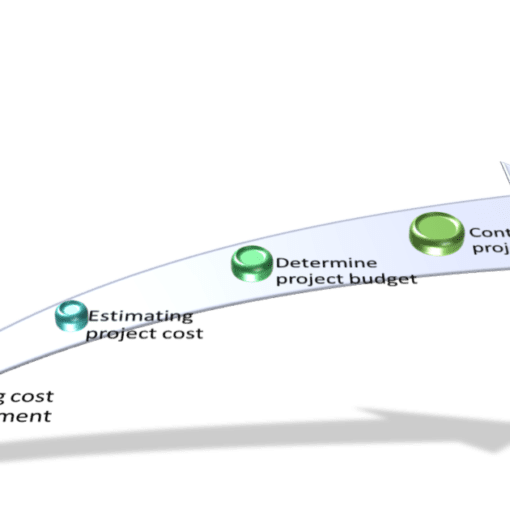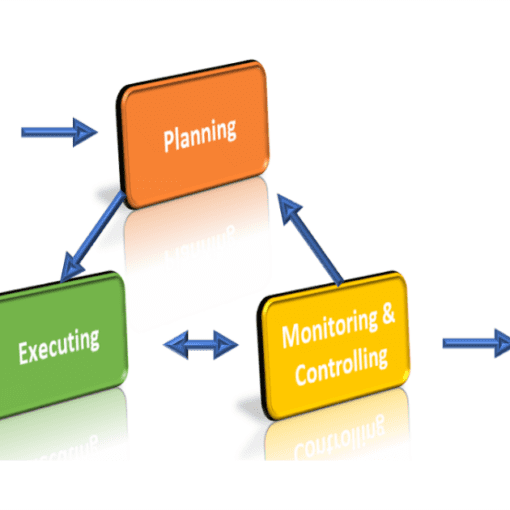To understand the present and future state of project management, it is essential to first understand its history. Most people think of project management as a recent invention, something that emerged with the rise of the modern corporation in the late 19th century.
However, the history of project management goes back much further than that. In fact, the first recorded examples of project management date all the way back to the Roman Empire. During that time, Emperor Augustus undertook a massive building program that included such feats as constructing a new harbor at Ostia and rebuilding the city of Rome after a devastating fire.
During the Middle Ages, project management was often referred to as "construction management", because most projects during this time period were construction projects, such as building cathedrals and castles.
The field of project management has evolved tremendously over the last century or so. In this article, we will take a brief look at the history of project management and how it has developed into the critical function it serves today.
Key Players in the History of Project Management

Project management is the process of planning, executing, and monitoring a project in order to effectively and efficiently achieve its objectives. Its history is a long and fascinating one.
Some of the key players in this field include Henry Gantt, Frederick Taylor, and Henri Fayol, although there are others who played a part in their own unique way towards the growth and development of project management. These individuals made significant contributions to the field of project management.
Modern project management can trace its roots back to the late 19th century and the early days of the Industrial Revolution. One of the first references to project management was in a paper published in 1896 by Frederick Winslow Taylor, who is considered the father of scientific management.
In his paper, "The Principles of Scientific Management," Taylor argues that there is a science to work and that by applying these principles, businesses can increase efficiency and productivity.
Taylor is best known for his work in time management and efficiency. His theories on scientific management helped to revolutionize factory production and have since been applied to many other industries.
Henri Fayol is another important name in the history of project management. He is best known for his work on organizational theory. Fayol's ideas on division of labor and chain of command are still used by businesses today.
The need for project management began to rise in the late 19th century with the increase in size and number of modern corporations. Large businesses started undertaking increasingly complex projects, such as designing and building skyscrapers and railroads.
The need for professionals who could manage these projects effectively led to the emergence of project management as a formal field of study.
In the early 20th century, when large-scale projects such as the construction of the Panama Canal and the Hoover Dam were first undertaken, new methods of project management were developed in order to complete these projects within the specified time-frame and budget.
These methods proved to be so successful they were soon adapted for use in other industries, such as manufacturing and software development.
Project Management Continues to Grow and Gain Importance

After World War II, project management began to emerge as a distinct field. The war effort had shown the need for organizations to be able to manage complex projects with large teams of people working across different geographic locations.
The 1950s also saw the development of what would become known as earned value management (EVM). EVM is a technique for measuring progress on a project by assigning values to specific milestones and then tracking actual progress against those milestones.
In 1953, Henry Gantt published "A Study of Large-Scale Organizational Projects." This paper would lay the foundation for many of the concepts that would become central to project management.
Gannt is best known for his creation of Gantt’s Chart, a visual tool used to track the progress of a project. Gantt's Chart is still used today by project managers all over the world.
Each of the individuals mentioned made significant contributions to the field of project management.
Together, their work has helped to shape the way we manage projects today.
The 1950s and 60s would see further advances in project management methodology with the development of the "The Critical Path Method" by Morgan R. Walker and James E. Kelley Jr. The Critical Path Method (CPM) is still used by project managers today and forms the basis for most modern project management software applications.
The Birth of PM Certification
As organizations increasingly relied on projects to achieve strategic goals, the need for formal project management training and certification also grew. In 1969, Price Systems and Program Evaluation Review Technique (PERT) became some of the first companies to offer formal project management training courses.
The Project Management Institute (PMI) was founded in 1969 and began offering its Certified Associate in Project Management (CAPM) certification in 1973. Since then, PMI's Project Management Professional (PMP) certification has become one of the most widely recognized project management certifications in the world.
PMI® is the publisher of the PMBOK® (Project Management Body of Knowledge) which is in its 7th version circulating at the time of this article.
- PMBOK® Guide 1st Edition [1996]
- PMBOK® Guide 2nd Edition [2000]
- PMBOK® Guide 3rd Edition [2004]
- PMBOK® Guide 4th Edition [2009]
- PMBOK® Guide 5th Edition [2013]
- PMBOK® Guide 6th Edition [2017]
- PMBOK® Guide 7th Edition [2021]
PRINCE was derived from an earlier method called PROMPT II (Project Resource Organisation Management Planning Techniques). In 1989 the Central Computer and Telecommunications Agency (CCTA) adopted a version of PROMPT II as a UK Government standard for information systems (IT) project management. They gave it the name 'PRINCE', which originally stood for "PROMPT II IN the CCTA Environment". PRINCE was renamed in a civil service competition as an acronym for "PRojects IN Controlled Environments". PRINCE2 is the second edition of the earlier PRINCE method which was initially announced and developed in 1989.
The Role of Technology
Technology has played a major role in the development of project management techniques and tools. In the past, project managers relied on paper-based systems to track tasks and deadlines. However, these systems were often cumbersome and inefficient, making it difficult to get an overview of the project or identify potential problems. Today, there are numerous computer-based tools that can be used to manage projects more effectively.
These tools allow managers to create detailed plans, track progress, and communicate with team members more easily. As a result, they have made it possible to complete projects more efficiently and with fewer delays. Technology will continue to play a key role in the development of project management techniques and tools in the future.
Overcoming Future Challenges in Project Management

Project management is an essential part of any organization, yet it faces a number of challenges that must be overcome in order to be successful.
One of the most significant challenges is the increasing complexity of projects. With more organizations working on global scale projects, there are more stakeholders involved and more moving parts to manage. This can make it difficult to keep track of dependencies and ensure that all deadlines are met. In addition, new technologies are constantly emerging that can impact the way projects are planned and executed. For example, the rise of artificial intelligence and machine learning is changing the nature of work, and this will have a significant effect on project management.
To overcome these challenges, project managers need to be flexible and able to embrace change. They also need to have access to the latest tools and technologies.
By staying ahead of the curve, project managers can ensure that their projects are successful now and in the future.
The Demand for Project Management Remains Strong
Project management has come a long way since its humble beginnings. What started out as a few scattered ideas about how to improve work efficiency has evolved into a profession with its own body of knowledge, certifications, and professional organizations.
Project management today is an essential part of any business undertaking complex initiatives. With origins that began in Ancient Rome and Medieval Europe, project management as we know it today has evolved rapidly, with new methodologies and tools being developed to help businesses plan and execute even the most complex projects.
Today, project management is an essential tool for any business that undertakes complex projects. It helps to ensure that projects are completed on time, within budget, and to the required specification.
Successful leaders find diversity in project management is important for the success of any project. By including team members from different backgrounds, you can get a variety of perspectives and ideas that will help to identify potential problems and solutions sooner. Additionally, a diverse team is more likely to be creative and productive, often resulting in a higher-quality product or service.
There are dozens of different project management methodologies, tools, and software platforms available to help businesses plan and execute even the most complex projects.
Tools and Templates
Templates actually increase flexibility, they're easy to update, and they provide consistency across the project. They can be improved regularly to meet technological and instructional requirements as well as the client's needs. These are easily tracked and updated.
Next - The Future of Project Management
As we have seen, project management has a long and varied history that goes back for centuries. Today, more than ever before, project management is an essential component in the business world.
With the continuous evolution of project management, along with the development of new software and programs to, it is sure to remain a vital part of our ever-changing business landscape.
As our world becomes even more interconnected and reliant on technology, it's safe to say that project management will only become more important in the years to come, and the need for skilled, professionally certified project managers will continue to grow.
Soon I’ll be sharing another article, looking at the future of project management and how it will continue to shape the business world as we know it.







